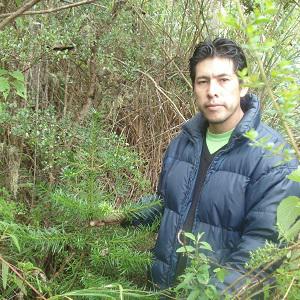Ariel Isaias Ayma Romay
Other projects
30 Jan 2009
Restoration of Bolivian Yunga Cloud Forests with Native Queñua (Polylepis racemosa) and "Pino de Monte" (Podocarpus glomeratus)
31 Aug 2011
Restoration and Management of Queñua (Polylepis racemosa) and Pino de Monte (Podocarpus glomeratus) Woodlands in the Yungas of Independencia, Bolivia I
Contribute to the restoration and management of Queñua (Polylepis racemosa) and Pino de Monte (Podocarpus glomeratus) woodlands in the Yungas of Independencia, Bolivia

Evaluation of the reforested plant higher of P. glomeratus
Podocarpus and Polylepis forest are vulnerable to the burning, domestic herbivorous and the felling of communities. The causes are the poor knowledge about these species and its benefits, the lack of agreements among users of the forest to protect and use it, and the little ecological knowledge to reforest these species. This project will intensify the activities carried out until now. In order to I will carry out the follows activities:
1) Environmental education. The local people (teachers, students and community farmers) will get familiar with the biology, ecology and the problems of conservation of P. glomeratus and P. lanata, in order to be able to design and prioritize new practices and policies for their protection.
2) Facilitating local agreements. At community level I will evaluate the knowledge and the compliance level of local norms to protect and use the forest of P. glomeratus and P. racemosa in communities where we worked the last year (Pajchanti, Salviani) and including one new community where the deforestation is also existent (Condorillo). They will analyze their strengths and weaknesses and will make new agreements among them and with local organizations (NGO, municipal government), who could assist them when they have problems in the use and protection of their forest. At municipal level I will facilitate agreements and formal municipal policies that will regulate the actions and responsibilities of local organizations (schools, communities, municipal government, NGOs and others) to protect and use the forest of P. glomeratus, P. racemosa and other formations of native vegetation, because I understand that this is needed to facilitate the coordination among different organizations. All these agreements will need to organize workshops among farmers and local organizations.
Recovering the forest. I will follow working to increase the cover of these species carrying out plantations. Some plants will be planted with experimental designs to continue learning about the survival and growing of these plants. In order to I will collect seeds and cuttings from the forest, produce plants in a local nursery, reforest in old and new places carrying out new experiments to evaluate variables that could influence survival and growth of plants as the different vegetation covers, substances of growing (mycorrhizs, fertilizers and bio stimulants), origin of plants (cuttings or seeds) and kind of protection in order to avoid the livestock.